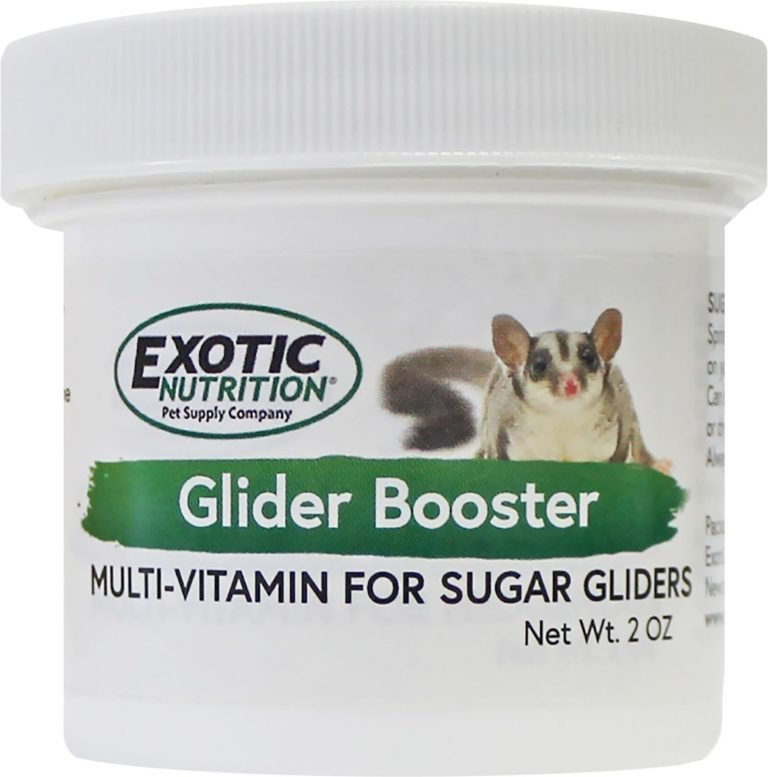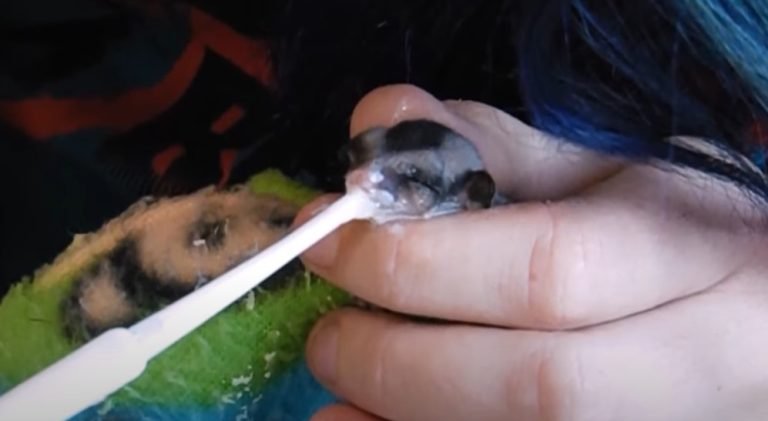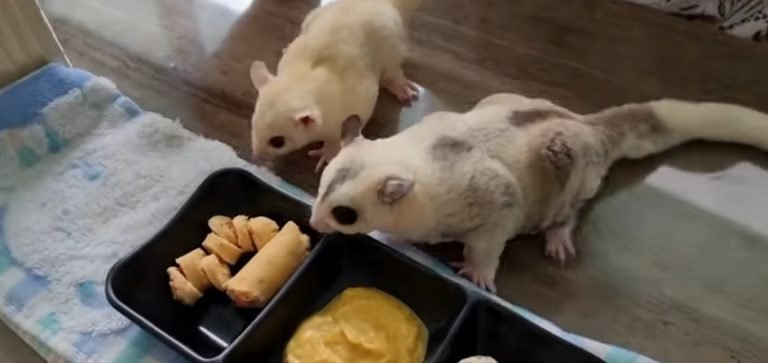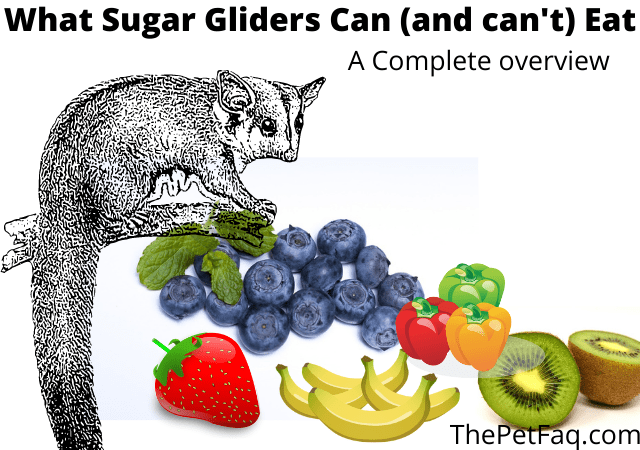How To Rehydrate A Sugar Glider
Sugar gliders are fascinating creatures that require specific care and attention to thrive as pets. Keeping them hydrated is essential, especially during hot weather or if they become ill. Recognizing the signs of dehydration in sugar gliders and taking prompt action can make a big difference.
In this article, we will discuss how to rehydrate a sugar glider, including tips on how to prevent dehydration and what to look out for. We will also provide step-by-step instructions on how to make an electrolyte solution to help rehydrate your pet. Whether you’re a new or experienced owner, it’s important to know how to keep your sugar glider hydrated and healthy. Read on to learn more!
What is Sugar Gliders Rehydrate?
Rehydrating a sugar glider involves providing them with fluids that contain electrolytes, such as sodium, potassium, and chloride. This is essential for maintaining proper hydration levels in the body. One way to do this is by making an electrolyte solution at home and offering it to your sugar glider using a syringe or dropper. It’s also important to ensure your sugar glider has access to fresh water at all times and monitor their behavior closely to ensure they’re drinking enough.
Signs Of Dehydration In Sugar Gliders
Many signs indicate that Sugar Gliders are dehydrated.Some are as below:
1.Sticky or tacky mouth: One of the earliest signs of dehydration in sugar gliders is a sticky or tacky mouth. This can be observed by gently touching their gums with your finger.
2.Lethargy: Dehydrated sugar gliders may appear lethargic, less active than usual, and reluctant to move or play.
3.Sunken eyes: If your sugar glider’s eyes look sunken or smaller than normal, this could be a sign of dehydration.
4.Dry skin: Dehydration can cause dry, flaky skin in sugar gliders. Check for any patches of dry skin or dandruff on your pet’s body.
5.Reduced urine output: Dehydrated sugar gliders may produce less urine than usual. Pay attention to the frequency and volume of your sugar glider’s urination.
6.Loss of appetite: If your sugar glider is dehydrated, they may lose interest in food and have a reduced appetite.
7.Weakness: Dehydration can make sugar gliders weak and unsteady on their feet. Monitor your pet’s movements and behavior closely for any signs of weakness.
If you notice any of these signs in your sugar glider, it’s important to take immediate action to rehydrate them. Offer them fresh water and an electrolyte solution, and monitor their behavior closely to ensure they’re drinking enough.
Common Causes of Dehydration In Sugar Gliders

Here are some common causes of dehydration in sugar gliders:
Lack of Access to Water: Sugar gliders need access to fresh water at all times. If their water bottle or dish is empty or not refilled regularly, they may become dehydrated.
High Temperature and Humidity: Sugar gliders are native to tropical and subtropical regions, but they cannot tolerate extreme heat and humidity. If the temperature in their environment becomes too high, they may sweat and lose fluids rapidly.
Illness or Disease: Some illnesses and diseases can cause sugar gliders to become dehydrated. For example, diarrhea or vomiting can lead to significant fluid loss.
Diet: The diet of a sugar glider should be rich in water content. If they are fed a diet that is low in water or does not contain fresh fruits and vegetables, they may become dehydrated.
Stress: Stress can also contribute to dehydration in sugar gliders. When sugar gliders are stressed, they may stop eating or drinking, leading to dehydration.
Travel: If you are traveling with your sugar glider, it is important to ensure that they have access to water throughout the journey. During travel, sugar gliders may become dehydrated due to stress or lack of access to water.
It is important to monitor your sugar glider’s water intake and make sure they have access to clean, fresh water at all times. If you suspect your sugar glider is dehydrated, consult with a veterinarian for proper diagnosis and treatment.
How To Rehydrate a Sugar Glider – Step By Step Guide
Rehydrating a sugar glider is an important process that should be done carefully and with the right knowledge. Here is a step-by-step guide on how to rehydrate a sugar glider:
1.Assess the sugar glider’s condition: Before you begin the process of rehydration, you need to assess the sugar glider’s condition and determine whether it needs immediate medical attention. Look for signs of dehydration such as sunken eyes, dry mouth, lethargy, and loss of appetite.
2.Provide fresh water: The first thing you need to do is provide your sugar glider with fresh water. Ensure that the water is clean and free from any contaminants. You can use a shallow dish or a water bottle specifically designed for sugar gliders.
3.Offer electrolyte solution: In addition to water, you can offer your sugar glider an electrolyte solution to help replenish lost fluids and minerals. You can purchase an electrolyte solution specifically designed for sugar gliders or make one at home by mixing water with a small amount of sugar and a pinch of salt.
4.Offer juicy fruits: Sugar gliders love juicy fruits like watermelon, grapes, and strawberries, which can also help rehydrate them. Cut up the fruit into small pieces and offer it to your sugar glider in a shallow dish.
5.Monitor their progress: After providing the sugar glider with water, electrolyte solution, and juicy fruits, monitor their progress closely. Keep an eye on their hydration levels and make adjustments to their diet and hydration routine as needed.
6.Seek veterinary attention if necessary: If you notice that your sugar glider’s condition is not improving despite your efforts to rehydrate them, seek veterinary attention immediately. Dehydration can cause serious health problems in sugar gliders and prompt treatment is essential.
Remember that prevention is always better than cure when it comes to dehydration in sugar gliders. Make sure your sugar glider always has access to clean water and juicy fruits to help prevent dehydration.

Homemade rehydration solutions for sugar gliders
If your sugar glider is dehydrated, it is important to seek veterinary care immediately.
That being said, homemade rehydration solutions can be used alongside veterinary treatment as a supplemental measure. Here is a recipe for a homemade rehydration solution for sugar gliders:
Ingredients:
- 1 cup of water
- 1/8 teaspoon of salt
- 1 tablespoon of honey
Instructions:
- Boil the water and let it cool to room temperature.
- Add the salt and honey to the water, and stir until dissolved.
- Using a syringe, offer the solution to your sugar glider every few hours or as directed by your veterinarian.
It is important to note that this homemade rehydration solution should not replace veterinary care and should only be used with guidance from a veterinarian. Additionally, if your sugar glider is not drinking on its own, you should consult a veterinarian immediately.
Tips for preventing dehydration in sugar gliders
Dehydration can be a serious issue for sugar gliders, so it is important to take steps to prevent it. Here are some tips to help prevent dehydration in sugar gliders:
Provide fresh water at all times: Sugar gliders should have access to clean, fresh water at all times. It is essential to change the water daily and wash and sterilize the water bottle or dish regularly.
Offer juicy fruits and vegetables: Sugar gliders require a balanced diet that includes fruits and vegetables with high water content, such as cucumbers, watermelon, or oranges. These foods not only provide hydration, but also essential vitamins and minerals.
Use a humidifier: Sugar gliders come from tropical regions where the air is moist. A humidifier can help maintain proper humidity levels in the room where the sugar glider lives, preventing them from becoming dehydrated.
Monitor their urine output: Regularly check your sugar glider’s urine output to ensure they are drinking enough water. If you notice a decrease in urine output or a change in urine color, it may indicate dehydration.
Avoid feeding dry foods exclusively: Dry foods like pellets should not be the sole diet of sugar gliders as they contain low moisture and can lead to dehydration. Supplementing dry foods with fresh fruits and vegetables would provide additional hydration.
Take extra care during hot weather: During hot weather, sugar gliders are at an increased risk of becoming dehydrated. Ensure that they have access to cool water and cool areas to rest.
By following these tips, you can help keep your sugar glider healthy and hydrated. Remember, if you suspect that your sugar glider is dehydrated or has any other health issues, consult a veterinarian immediately.
When to seek veterinary care for a dehydrated sugar glider
Dehydration can be very serious for sugar gliders and can lead to a variety of health problems. If you suspect that your sugar glider is dehydrated, it is important to seek veterinary care immediately.
Here are some signs that may indicate that a sugar glider is dehydrated and in need of veterinary care:
Sunken eyes: Dehydration can cause the eyes to appear sunken or dull, indicating a lack of hydration in the body.
Lethargy: Sugar gliders that are dehydrated may become lethargic and inactive. They may also have difficulty moving around and may appear weak.
Dry mouth: Dehydration can cause the mouth and tongue of a sugar glider to become dry and sticky. This can make it difficult for them to eat and drink.
Decreased urine output: A dehydrated sugar glider may produce less urine than usual, and their urine may be darker in color.
Loss of appetite: Dehydration can cause a loss of appetite in sugar gliders, leading to weight loss and other health problems.
If you notice any of these signs in your sugar glider, it is essential to seek veterinary care right away. Your veterinarian may recommend intravenous fluids or other treatments to rehydrate your sugar glider and address any underlying health issues that may have contributed to the dehydration. Early intervention can increase the chances of a successful recovery and prevent more serious health complications.
Final Thoughts
Rehydrating a sugar glider is critical to its overall health and wellbeing. If your sugar glider is dehydrated, it is important to get veterinary care immediately. Home remedies such as the rehydration solution can be used in conjunction with veterinary treatment. Always monitor your sugar glider’s water intake, urine output, and activity level to ensure they are well hydrated.
Providing a balanced diet that includes fresh fruits and vegetables with high water content is also key to preventing dehydration. Additionally, maintaining proper temperature and humidity levels in their environment can help prevent dehydration.
Remember that prevention is always better than cure, so take steps to prevent dehydration in your sugar glider before it becomes a problem.
FAQs
1.How do I know if my sugar glider is dehydrated?
Signs that your sugar glider is dehydrated include sunken eyes, lethargy, dry mouth, decreased urine output, and loss of appetite. If you notice any of these symptoms, seek veterinary care immediately to prevent serious health complications.
2.Can sugar gliders drink Pedialyte?
It is not recommended to give Pedialyte to sugar gliders unless advised by a veterinarian. Pedialyte is formulated for humans and may contain ingredients that could be harmful to these small marsupials. It’s important to provide sugar gliders with fresh water and a balanced diet to maintain their health.
3.How do I get my sugar glider to drink water?
Sugar gliders require a consistent supply of fresh water to maintain their health. You can encourage your sugar glider to drink by providing a clean water source in a shallow bowl and placing it in an easily accessible location. Some sugar gliders also enjoy drinking from a water bottle with a sipper tube. If your sugar glider is not drinking, you may need to check the temperature and humidity levels in their environment as they prefer a warm and humid climate.
4.What are hydrating foods for sugar gliders?
Sugar gliders are known to obtain hydration from their food, and a diet consisting of fresh fruits and vegetables can help keep them hydrated. Juicy fruits like watermelon, strawberries, and grapes are excellent sources of hydration for sugar gliders. Leafy greens such as spinach and kale are also hydrating and provide essential vitamins and minerals. It’s important to provide a balanced diet for your sugar glider that includes a variety of fresh foods to maintain their health and hydration levels.
5.How long does it take for a sugar glider to dehydrate?
Sugar gliders are small animals with a high metabolic rate, which means they can become dehydrated quickly. In hot and dry conditions, sugar gliders can become dehydrated within a few hours. Signs of dehydration include lethargy, dry mouth, sunken eyes, and loss of skin elasticity. If you suspect your sugar glider is dehydrated, it’s important to provide them with fresh water and hydrating foods immediately.







